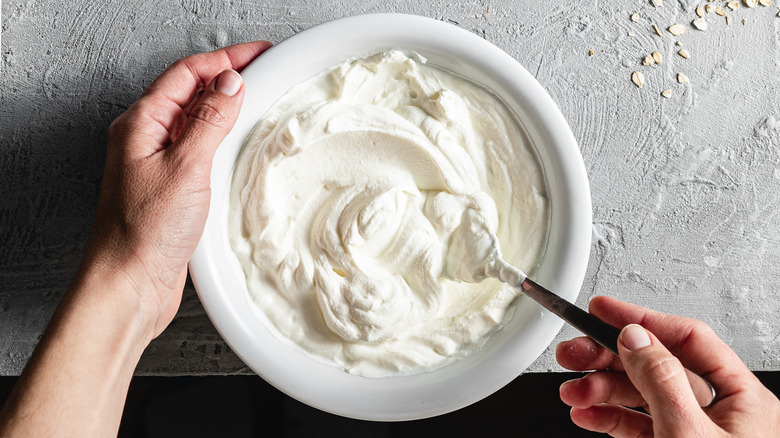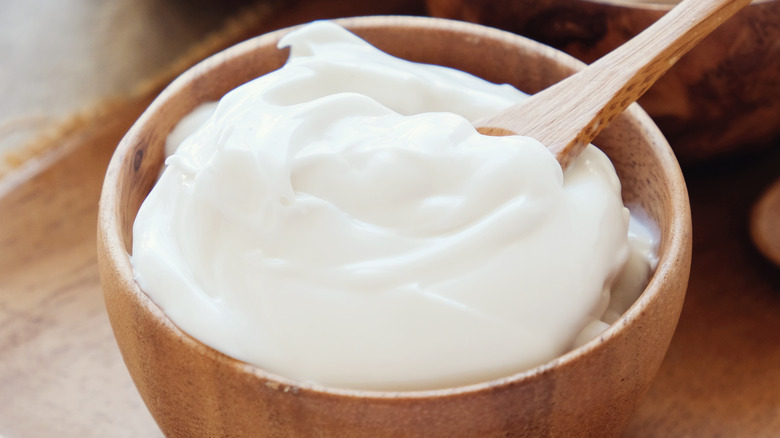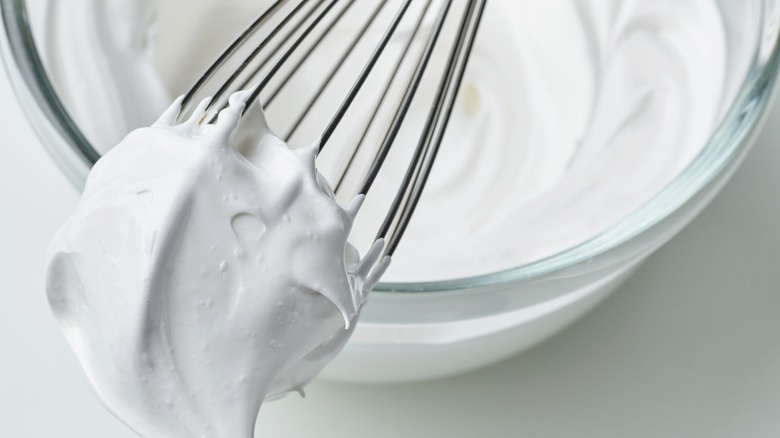Why You Shouldn't Worry About Overmixing Dairy-Free Whipped Cream
If there's one topping that goes well on just about any dessert, it's whipped cream. The soft, silky foam adds richness, flavor, and decadence to everything from a hearty cup of hot chocolate to a bowl of ice cream. Better yet, it's easy to make at home!
Now, if you're dairy-free or vegan, that doesn't mean you can't enjoy this flavorful topping. You might even have an advantage over those who opt for the standard variety. That's because when you make it, you don't have to worry about overmixing.
Regular whipped cream can turn into butter if you're not careful. That's because when you beat whipped cream — which contains a certain amount of milk fat solids – the fat molecules in the liquid begin to stick together, which is what creates the smooth, rich topping we know and love. However, if you continue to beat the product, the fat clumps get larger and larger, eventually pushing out all the water in the cream and leaving you with butter and a milky liquid, which can be drained off. However, with dairy-free whipped cream, you don't run this risk, meaning that even if you turn on the beater and walk away, you won't come back to find your topping ruined.
Making non-dairy whipped cream at home
If you're making non-dairy whipped cream, it pays to know what you can use instead of dairy cream. Canned coconut cream, which is the solid part that typically separates in a can of coconut milk, is one option. Alternatively, you could opt for the non-dairy alternatives available in your supermarket, like Silk's non-dairy whipping cream. You can also make your own homemade non-dairy variety using your favorite non-dairy milk with a little xanthan gum and cornstarch over a double boiler to thicken it.
Once you've chosen your base, you'll whip it up in the same way you would dairy cream. Typically, you'll just use the same amount as you would with regular heavy whipping cream. But it's important to note that it tends to have a softer texture, so it may not achieve the exact same fluffiness as its dairy counterpart — but rest assured, it won't turn into butter.
Tips and tricks for making vegan whipped cream
If you're making vegan whipped cream, it helps to have a few tricks up your sleeve to ensure you get a light, fluffy topping with a smooth consistency that doesn't deflate immediately. One pro tip is to be careful what kind of sweetener you use. Although it may be tempting to use liquid sweeteners, these can cause your mixture to become too runny and unable to stand up properly. At the same time, granulated sugar can leave a grainy texture to your cream. The best option for ensuring a good consistency is to go with powdered sugar, which blends in without introducing unwanted liquid.
Another tip to keep in mind has to do with coconut whipped cream. This method requires beating the creamy, solid part of a can of coconut milk to form a tasty topping. If you're making this particular vegan recipe, one trick to help ensure you get a firm whip is to chill the coconut milk beforehand for several hours or overnight. The coconut solids will rise to the top of the liquid and firm up, making them easy to scoop out and also helping ensure your vegan cream has a firmer consistency.
Although making vegan whipped cream isn't quite the same as the regular stuff, you can still get a tasty topping if you know what to do. With these tips and tricks, you're well on your way to enjoying vegan desserts paired with this versatile topping.


